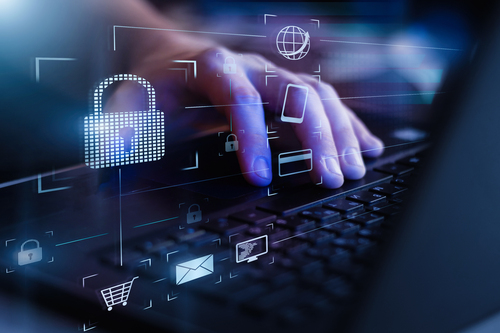Une croissance d’usage de 30 % des réseaux informatiques bancaires
Le gouvernement l’avait annoncé dès le début du confinement : les banques sont des opérateurs d’importance vitale et doivent assurer une continuité de service essentielle au maintien du lien économique et social.
Pendant cette période, « Les réseaux informatiques des banques ont connu en moyenne une croissance d’usage de 30 % ", explique Stéphane Busse, associé spécialiste des stratégies IT dans les services financiers chez Bain & Company, dans les colonnes du journal Les Echos. Les établissements bancaires ont dû s’adapter en accueillant leurs clients sur rendez-vous, en réduisant leurs horaires d’ouverture, en assurant la présence partielle des équipes. La crise actuelle incite les banques à accélérer leur transformation numérique. Celles-ci sont désormais confrontées à des problématiques structurelles : vulnérabilité aux cyberattaques, modèles incompatibles avec le télétravail, système qui résiste à l’open banking...
Crainte de l’émergence de nouvelles menaces
La mise en place du télétravail au sein des grands réseaux bancaires et le recours croissant à la banque à distance ont entraîné une hausse des cybermenaces. C’est en tout cas ce qu’a déclaré un haut responsable de la Banque centrale européenne (BCE) en octobre dernier. Parmi ces attaques figure le ransomware, un virus qui permet de chiffrer les données d’un ordinateur pour les rendre incompréhensibles et inutilisables par le propriétaire. Pour récupérer ces données, les pirates exigent alors le versement d’une rançon.
En juillet 2020, l’assureur MMA a été victime de ce type d’attaque. Ses activités sont restées fortement perturbées pendant une dizaine de jours. Conséquence pour les clients : des délais de traitement des dossiers allongés, mais pas de fuite de données. Plus récemment, la banque LCL a connu un problème technique majeur. De nombreux clients ont eu accès à des comptes bancaires d’autres utilisateurs en se connectant avec leurs identifiants. Dans un communiqué, l’établissement assure toutefois qu’il ne s’agissait pas d’une cyberattaque, mais d’un bug informatique.
Pannes informatiques, cyberattaques : le secteur bancaire est-il réellement préparé ?
Les banques et assureurs ne sont pas les plus ciblés par les cyberattaques, les PME ayant été en ligne de mire pendant le confinement. Même si ces acteurs développent de plus en plus d’outils pour prévenir ces risques, plusieurs pistes d’amélioration peuvent être identifiées. L’une d’entre elles, suggérée par Alessandro Roccati, coauteur d’une étude Moody’s réalisée sur le sujet, serait de placer certaines données dans les clouds des GAFAM réputés plus performants en matière de cybersécurité. Autre solution possible : renforcer la coopération entre les banques en allouant davantage de moyens au partage d’informations sur les attaques subies et en organisant des simulations d’attaque.
Ainsi, un bilan doit être tiré de la crise sanitaire afin de permettre aux banques d’accélérer leur implication dans l’ère de la modernisation en toute sécurité et en intégrant les nouveaux usages des clients.
